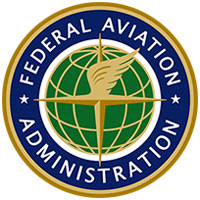
The United States Federal Aviation Administration last week came under fire once again for problems with the implementation of its troubled Next Generation Air Transportation System.
The NextGen program to overhaul the U.S. national air traffic control system, estimated to cost US$29 billion between 2013 and 2030, long has been the target of congressional wrath. In a recently released report following a congressionally mandated study, the U.S. National Research Council maintained the FAA was not implementing NextGen’s original vision.
Among other things, NextGen planning did not fully integrate cybersecurity into safety activities or explicitly anticipate the introduction of drones into U.S. national airspace, says the report, which received funding support from the FAA. It recommends the FAA reset expectations for the program.
“For a variety of reasons, it’s proven harder than originally anticipated to achieve that vision, in part because the individual stakeholder incentives are not necessarily aligned with achieving it,” said David Liddle, chair of the committee that conducted the NRC study.
The report recommends the FAA, Congress and “all stakeholders” work together to “communicate and reset expectations so as to ensure that everyone is on the same page about what is being done and what can be expected in the future, and in what time frames,” Liddle told the E-Commerce Times.
The Report’s Findings
NextGen must adopt a system architecture to better manage NextGen’s evolution, the report recommends. The current architecture focuses on documentation instead of supporting decision making.
The FAA should take an effective governance approach. It should initiate, grow and engage a community of systems architecture experts and rely on them to provide high-level guidance, the report recommends.
Cybersecurity should be incorporated at all levels of system architecture and design to mitigate risks, it says.
The FAA did not explicitly anticipate the introduction of unmanned aircraft systems into the national airspace, the report found, and it should adopt measures to address that development.
Human factors should be recognized and integrated into design, technical, engineering and architectural discussions as early as possible, and the FAA should ensure that a human factors specialist has sign-off authority within the NextGen approval process.
“Especially in the future, when the human factors aspect of the [National Airspace System], including the tools and interfaces that pilots and controllers rely on, are expected to change significantly, human factors will need to be considered throughout the design process, and the issues will be important enough to merit review and signoff by NextGen overall, not just as part of the individual program approvals,” the NRC’s Liddle explained.
The delays in implementing new procedures and technologies means airlines may not see benefits of NextGen, such as increased automatic communication between aircraft and reduced delays to passengers, the report notes. The FAA should provide an estimate of costs and benefits before mandating any equipment.
“It’s not about compliance but about the business case — costs and benefits — that might be used to justify future mandates,” Liddell said. “If carriers cannot see a clear way to recoup costs, then they will be less incentivized to equip, and more likely to oppose future mandates.”
The FAA’s Side of the Story
The FAA does have a stakeholders group — the NextGen Advisory Committee — consisting of leaders from the unions, cargo and passenger airlines, industry associations, and vendors and contractors, NextGen Assistant Administrator Edward Bolton told the E-Commerce Times.
It worked with them to put together a specific plan, announced two years ago, that spells out times, locations, metrics, and cost for several major areas.






















































Social Media
See all Social Media